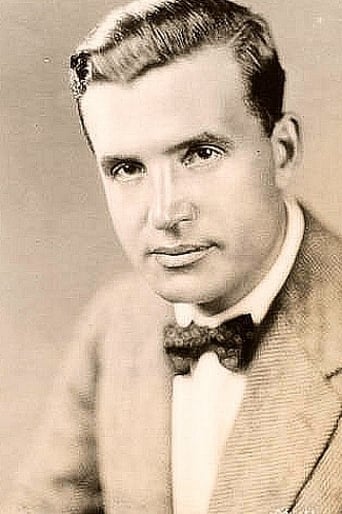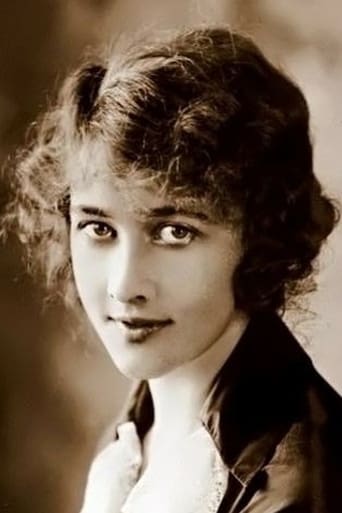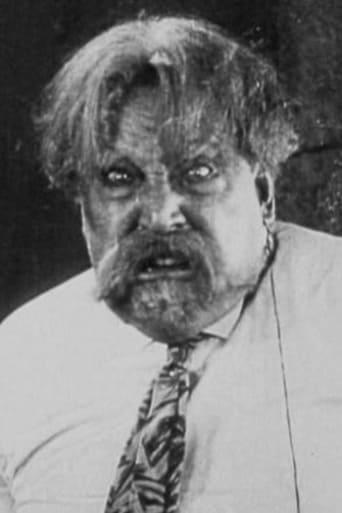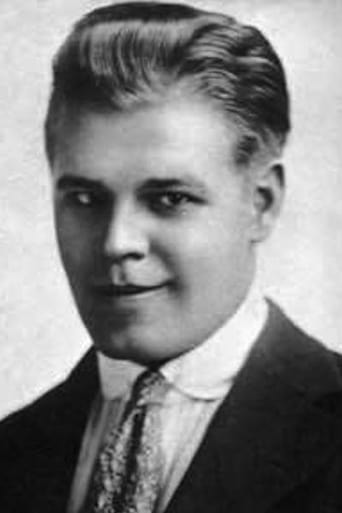Clevercell
Very disappointing...
Wordiezett
So much average
AnhartLinkin
This story has more twists and turns than a second-rate soap opera.
Humaira Grant
It’s not bad or unwatchable but despite the amplitude of the spectacle, the end result is underwhelming.
calvinnme
Directed by Raoul Walsh, this is an exciting and poetic film, using all the elements at play in his greatest movies. Those signatures really stand out, even all the way back at the beginning of his career.It's the story of a tenement street kid who loses his kindly mother at age 10. (The scene that starts the film is quite moving. This is not to be a comic adventure film, but a very serious drama). The boy is taken in by a neighbor woman, a harridan, but a kind hearted one whose husband is a drunkard who beats her and the boy every chance he gets. The boy starts to lose whatever humanity he had, due to the influence of this battling couple.He rises to a position of 'prominence' in the tenement community over the years, since he has all the things that the denizens of the street find attractive - a devil may care attitude, a sense of daring, a lot of strength and good looks. He's never lost his inner gentle nature, but it's hidden under a mask of bravado and cynicism that he needs to survive. The actor, Rockcliffe Fellowes, looks like a cross between Marlon Brando, Jimmy Cagney and Jason Segal. He's quite good... in fact he totally reminds me of Brando in THE WILD ONE. The camera loves him. As Owen, he's able to play both sensitive and tough, which is a magic combination for Walsh.He falls for Marie whom he calls Mamie Rose (Anna Q.Nilsson), a wealthy girl who is being groomed by her parents for marriage to the city's new District Attorney. The DA has just been appointed and tells all the newspapers that he is cracking down on crime. One night, the girl tells the DA that she wants to see what the street toughs are like for herself. The DA tells her and her friends that he knows a dive where they can see all the lowlifes they want to. Of course, after having his picture in the papers all over town, the DA is immediately recognized and the crowd starts to heckle him showing him how tough they really are. The girl cries out for someone to help the foolish DA, and our Owen breaks up the crowd and leads them to safety. Owen is smitten, and Mamie is struck hard with the need to help the poor and destitute.She immediately starts work in the neighborhood, doing good deeds and handing out medicine and money to the needy. The rest is just about what you would think a Walsh film would be, with Owen trying to make good out of unrequited love for Marie, who doesn't really realize his feelings. He finds inspiration to become better educated and make something of himself through her ministrations. She turns to him as a pillar of strength when things go wrong.His loyal pal, a street kid who has a deformity who Owen once saved from being made fun of, is a splendid actor. All of the street toughs really look like street toughs, which is refreshing and a bit scary. Walsh builds up the action in a very similar way to The Roaring Twenties, with a really evil gang leader who takes over when Owen tries to goes straight. There was a surprise ending, for me anyway.This film was very well done for the time it was made and I can see how it made Walsh famous. It made me love him all the more for his sensitivity and realism.
kidboots
What a super movie - it had thrills, suspense and a very surprising finish, you have to keep reminding yourself it is over 96 years old!!! Anna Q. Nilsson may well have been one of the first film stars to freelance. She was a beautiful Swedish actress who had been working at Kalem for four years. Unfortunately her salary had not increased (much) and she had just divorced her husband who happened to be Kalem's leading actor.Raoul Walsh esteemed her talents as an actress enough for him to cast her in "Regeneration", his first major directorial assignment and a sensational crime movie based on Owen Kildare's popular play, "My Mamie Rose", which was said to be autobiographical. Walsh, a disciple of D.W. Griffiths, may even have surpassed his master in some of the scenes from this movie. The crowd scenes at Grogans captured the color and vibrancy of the city's melting pot of people. Outside of a few scenes in a Bowery mission it was all filmed on the streets of New York, including scenes on the Hudson River.The film begins with young Owen, due to the death of his mother, being taken in by his neighbours, the Conways, a rough couple who soon familiarize Owen with tough, unforgiving tenement life. Owen (Rockcliffe Fellows) is eventually hardened to the "might is right" way of the streets and by his mid twenties is the leader of a tough street gang. The new D.A. vows to stamp out the gangsters but bows to pressure from butterfly socialite Marie (Nilsson) who longs to see a gangster close up. He takes her to Grogans, the local gangster haunt but is involved in a scuffle and Marie's real distress catches Owen's attention. He breaks up the fight but the incident awakens Marie's better self and she soon finds herself running a settlement house in the heart of the gangster district. The day everyone looks forward to is the annual treat, a day of pleasure on a large boat. The fire on board the boat showed Walsh's superb handling of crowds - people madly running everywhere, the plunging into the river, the frantic scramble to get to a boat that eventually collapses through overloading and the end title that declares "All the kiddies were saved"!!! Apparently Walsh hired thugs from Hell's Kitchen to round up some extras from the Bowery and when there weren't enough women he offered some men extra money to dress up as women and it made for a vivid and realistic sequence when they all jumped into the water. William Fox was so impressed that he raised Walsh's salary to $800 a week!!There is even a graphic (for 1915) scene of drug use. A woman flees to the settlement begging that someone rescue her baby from the dwelling she shares with her drug addicted husband. Owen, who is not involved with the settlement, is deemed the man for the job and when he goes to the room and finds the man in a groggy state, by rescuing the baby his salvation begins. Children are symbols of innocence and purity - Owen, as a child, was seen as a loving little boy who was corrupted by the adult couple who took him in and in the fire sequence, Owen runs back to the boat to save two little girls. Griffith's influence is seen in the pathos, when Marie realises Owen has secretly helped a friend, "Skinny", to avoid a serious charge although in Owen's favour, he wants nothing more to do with "Skinny" - it was as a favour to repay a childhood debt.Interspersed between a brutal near rape scene are various Griffith inspired titles, very flowery, some with biblical quotations.
Jeff Sultanof
Rather than repeat what others have written, I'd like to comment on how this film managed to get into circulation.The only known print of the film was found in the basement of a building in Montana in 1976. Preserved (and not too soon given the deterioration seen in the middle of the film), it was part of a series of films shown during the New York Film Festival representing titles which had recently (1978) been saved. I remember seeing all of them; they included Lillom (recently issued on DVD in the Murnau/Borzage box and worth seeing), and The Letter (with Jeanne Eagles, which blew everyone away). It is a miracle that films still turn up in such a manner even this late in the game. Most films from this time period have long ago turned into flammable dust (they started to deteriorate as early as the thirties), and it is particularly fortunate that "Regeneration" is now among the living. Despite its crudities, it feels like a documentary of the seedier elements of New York, and it still works its magic; it has matured very well. Given that we can see how the streets of New York really looked almost 100 years ago, the film may play better than it did back then. Most of the people in this film are not actors, they are real people, and that is what we reacted to when we saw this back in the seventies. Additionally, the film is a real window into the transitional period when the one-reeler had turned into a longer, more ambitious feature. As a first feature for Walsh, this film is really extraordinary when we consider that the tools of film-making were still crude (the comments on the editing of the film are correct. However, the abruptness plays better on the big screen). Even more, the film also reminds us that the numerous features made between 1914 and 1920 included some real gems that are gone forever, and cannot be re-evaluated. How many really good actors and directors are known in name only because their work has disappeared?I consider this one of the finest examples of an early silent feature, and one of the landmark films of the silent era. It is an illustration of how the director of that time found his or her way, made mistakes and had chances to improve. It shows how filmmakers were taking the vocabulary used by Griffith and some European filmmakers to expand the techniques of storytelling to hold an audience's interest for an hour's worth of entertainment.A must-see if you are interested in silent films.
Michael_Elliott
Regeneration (1915) ** (out of 4) First film directed by the legendary Raoul Walsh after working on The Birth of a Nation is probably best known for being one of the first "gangster" pictures as well as being one of the first films to actually shoot on the streets of Hell's Kitchen. Owen is orphaned at the age of ten and taken in by his abusive neighbors and by the time he's an adult (Rockliffe Fellows) he's a "gangster" living on the streets, not working and drinking too much but a social worker decides to try and changed his ways. The term gangster here isn't like the gangster films we're accustomed to but instead it means poor folks hanging out on the streets. The historical importance of this film can't be argued and it clearly influenced some of Scorsese's films as he talked about in A Personal Journey with Martin Scorsese but at the end of the day there's really very little going on in this thing. The use of real locations and real actors is a nice touch but the story drags along and the editing, which Walsh is clearly trying to copy Griffith, is a mess. The 70-minute running time feels a bit long as well. From a historic standpoint this is worth viewing once but I doubt I'd go back for a second viewing. The highlight of the film is one scene where people are partying on a boat, which catches fire and they must try to make an escape. This here is certainly one of the great scenes of the silent era.



